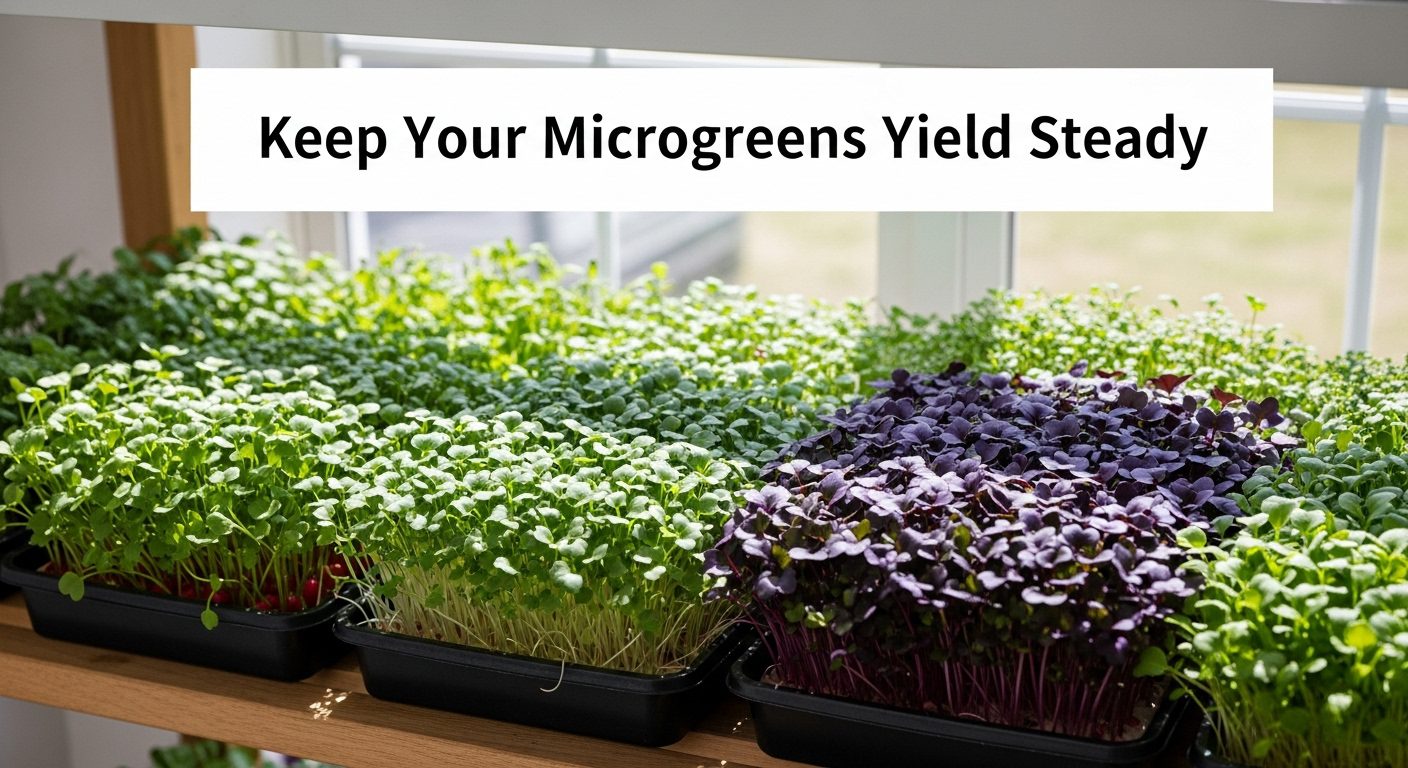
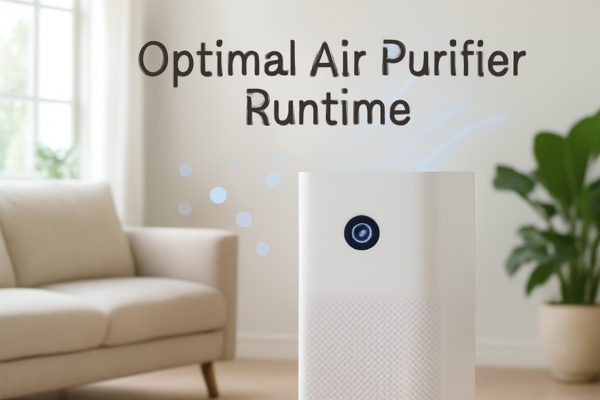
The soft hum of your air purifier fills the room, but a nagging question persists: are you running it too much, or perhaps not enough? You’re not alone in this dilemma. Millions of air purifier owners struggle to find the sweet spot between clean air and energy efficiency.
Here’s the straightforward answer: most experts recommend running your air purifier 24/7 for optimal air quality, but your ideal runtime depends on factors like room size, air quality concerns, and specific health needs. Whether you’re battling allergies, concerned about energy costs, or simply want cleaner air, this comprehensive guide reveals exactly how long to run your purifier in every situation.
We’ll explore science-backed recommendations from EPA guidelines and manufacturer specifications, break down runtime requirements by room size, examine energy costs, and provide optimization strategies that maximize clean air while minimizing waste. By the end, you’ll have a personalized runtime strategy that perfectly matches your needs.
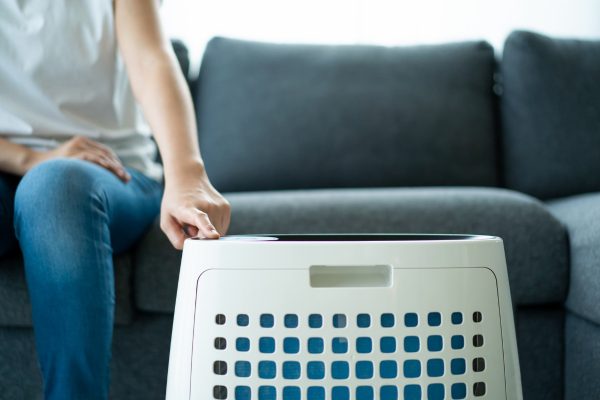
Let’s cut straight to what you need to know. Your optimal air purifier runtime falls into one of three main categories:
Continuous 24/7 Operation is recommended if you have severe allergies, asthma, or live in areas with high pollution. This ensures consistent air quality and prevents pollutant buildup when the unit is off. Modern purifiers are designed for continuous use and consume minimal energy, typically costing just $5-10 monthly.
8-12 Hours Daily works well for moderate air quality concerns, seasonal allergies, or general health maintenance. Run your purifier during peak activity hours or overnight for better sleep. This balanced approach provides substantial air quality improvement while reducing energy consumption and filter wear.
2-4 Hours Targeted Cleaning suits specific situations like post-cooking smoke removal, after using cleaning products, or quick room refreshing. Use maximum speed during these short bursts for rapid purification, then switch off or reduce to lower settings.
The key insight? Air quality doesn’t pause when your purifier stops. Pollutants continuously enter your space through ventilation, daily activities, and outdoor air infiltration. That’s why experts lean toward longer runtime recommendations, especially in bedrooms where you spend 6-8 hours sleeping.
Room size dramatically impacts how long your air purifier needs to run for effective cleaning. Understanding these requirements helps you optimize runtime while ensuring thorough purification.
Small spaces like bedrooms, home offices, or nurseries require surprisingly short runtime for initial cleaning. A properly sized purifier can thoroughly clean a small room in just 30 minutes to 1 hour. However, maintaining that clean air requires strategic planning.
For bedrooms, run your purifier for 30 minutes before sleep on high speed, then switch to low speed overnight. This approach removes accumulated daytime pollutants while maintaining quiet operation during rest. Home offices benefit from continuous low-speed operation during work hours, with a quick high-speed burst during lunch breaks to refresh the air.
The compact nature of small rooms means pollutants concentrate quickly but also clear rapidly with proper purification. Position your unit centrally, away from walls and furniture, to maximize efficiency and potentially reduce required runtime.
Living rooms, master bedrooms, and kitchen areas demand longer runtime due to increased air volume and typically higher activity levels. Plan for 2-4 hours of operation at minimum, though many users find better results with extended runtime.
These spaces often serve multiple functions and experience varied pollution sources throughout the day. Cooking odors, pet dander, and increased foot traffic all contribute to faster air quality degradation. Run your purifier continuously during high-activity periods, such as meal preparation or family gatherings.
For optimal results in medium rooms, consider programmable timers that activate your purifier 30 minutes before typical room usage. This pre-cleaning ensures you enter a space with already-improved air quality.
Open floor plans, combined living areas, and large master suites require 8-12 hours minimum runtime, with many situations benefiting from continuous operation. The sheer air volume in these spaces means single-pass cleaning takes significantly longer.
Large spaces often suffer from uneven air circulation, creating pockets of stagnant, polluted air. Extended runtime ensures multiple air exchanges and thorough mixing. Consider using multiple smaller units rather than one large purifier for better coverage and efficiency.
For open-concept homes, run purifiers continuously in high-traffic zones while using timer functions in less-frequented areas. This targeted approach balances thorough cleaning with energy conservation.
Certain health conditions and environmental factors make continuous air purifier operation not just beneficial, but essential for maintaining safe, breathable air.
Severe allergies and asthma sufferers experience dramatic improvement with 24/7 air purification. Continuous operation prevents allergen accumulation that triggers symptoms, especially during sleep when natural breathing defenses are reduced. Studies show consistent HEPA filtration can reduce airborne allergens by over 99%, significantly decreasing medication dependence.
Those with compromised immune systems, including chemotherapy patients or organ transplant recipients, require constant air filtration to minimize infection risks. Even brief exposure to airborne pathogens can cause serious complications, making continuous purification a medical necessity rather than a comfort choice.
Respiratory conditions like COPD, emphysema, or chronic bronchitis benefit from round-the-clock clean air. Patients report easier breathing, reduced coughing, and better sleep quality with continuous purification. Sleep apnea sufferers also find relief, as cleaner air reduces nasal congestion and breathing obstruction.
High outdoor pollution areas, particularly those exceeding EPA Air Quality Index readings of 100+, warrant continuous indoor purification. Urban environments near highways, industrial zones, or airports experience constant pollutant infiltration that only 24/7 filtration can combat effectively.
Wildfire smoke presents unique challenges requiring continuous operation. Smoke particles are exceptionally small and persistent, infiltrating homes even with closed windows. During fire season, run purifiers continuously on high settings, checking filters weekly as they’ll clog faster than normal.
New construction or recent renovations release volatile organic compounds (VOCs) and formaldehyde for months after completion. These chemicals off-gas continuously from paint, flooring, and furniture, requiring 24/7 purification for 3-6 months minimum. Your home might harbor hidden toxins that only consistent air purification can address.
Pet owners, especially those with multiple animals, benefit from continuous operation to manage dander, fur, and odors. Pets shed constantly, and their movement stirs settled particles back into breathing zones.
Smart scheduling maximizes air quality while minimizing energy use and filter wear. These strategies help you achieve clean air precisely when needed most.
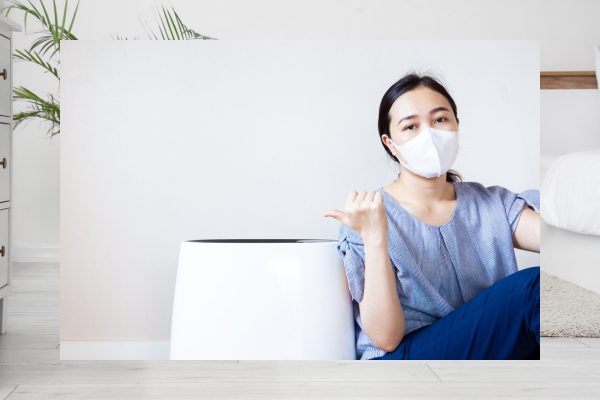
Morning and evening represent peak pollution periods in most homes. Outdoor pollutants are highest during morning rush hour (6-9 AM) and evening (4-7 PM). Schedule your purifier to run at maximum speed during these windows, capturing infiltrating pollution before it spreads throughout your home.
Overnight operation deserves special consideration. While you sleep, your body repairs itself, making clean air crucial for restorative rest. Run your bedroom purifier continuously on low speed overnight, positioned 3-6 feet from your bed for optimal breathing zone coverage. Many users report deeper sleep and reduced morning congestion with nighttime purification.
Pre-arrival scheduling transforms your home environment before you enter. Set timers to activate purifiers 30-60 minutes before returning from work, ensuring you walk into pre-cleaned air. This strategy is particularly effective for allergy sufferers who track pollen indoors on clothing and shoes.
Activity-based scheduling aligns runtime with pollution-generating activities. Run kitchen purifiers at high speed while cooking, continuing for 1-2 hours afterward to clear lingering odors and particulates. After deep cleaning your home, operate purifiers on high to capture stirred-up dust and chemical residues.
Spring pollen season demands aggressive purification strategies. Tree pollen peaks from March through May, requiring extended runtime or continuous operation. Monitor daily pollen counts and increase runtime on high-count days. Position purifiers near windows and entryways where pollen infiltrates most readily.
Summer brings unique challenges with increased ozone levels and air conditioning use. Run purifiers continuously when outdoor ozone exceeds safe levels, typically during afternoon hours. If using window air conditioners, place purifiers nearby to capture any pollutants pulled indoors.
Fall allergen peaks from ragweed and mold spores necessitate vigilant purification. These allergens are particularly persistent, adhering to clothing and pets. Increase runtime during September and October, using high-speed settings during prime outdoor activity hours.
Winter indoor air quality often deteriorates due to closed windows and increased heating system use. Dust mites thrive in warm, humid conditions created by heating systems. Run purifiers continuously in bedrooms and living areas, paying special attention to filter maintenance as heating systems circulate more dust.
Understanding the true cost of air purifier operation helps you make informed decisions about runtime without breaking your budget.
| Purifier Size | Wattage | Daily Cost (24hrs) | Monthly Cost | Annual Cost |
|---|---|---|---|---|
| Small Room | 40-50W | $0.15-0.19 | $4.50-5.70 | $54-68 |
| Medium Room | 60-80W | $0.23-0.31 | $6.90-9.30 | $83-112 |
| Large Room | 100-150W | $0.38-0.58 | $11.40-17.40 | $137-209 |
| Whole House | 150-200W | $0.58-0.77 | $17.40-23.10 | $209-277 |
*Based on average electricity rate of $0.16 per kWh
Energy Star certified models consume 20-40% less electricity while maintaining equivalent cleaning power. A certified medium-room purifier running 24/7 costs approximately $70 annually, less than most monthly cable bills. When compared to potential medical costs from poor air quality, the investment proves remarkably cost-effective.
Consider the health return on investment: reduced doctor visits, decreased medication needs, and improved productivity often offset energy costs within months. Many users report saving hundreds annually on allergy medications alone after implementing consistent air purification.
Smart features further reduce costs through efficient operation. Auto modes adjust fan speed based on air quality, reducing energy use by up to 50% compared to constant high-speed operation. Timer functions eliminate wasteful operation in empty rooms.
Strategic optimization can dramatically improve your purifier’s effectiveness, potentially reducing required runtime while maintaining superior air quality.
Proper positioning can reduce required runtime by 25-40% through improved air circulation. Place units in central locations with unobstructed airflow on all sides. Maintain 12-24 inches clearance from walls and furniture to prevent dead zones where polluted air stagnates.
Position purifiers at breathing height whenever possible. Floor placement works, but elevating units on tables or stands improves breathing zone coverage. In bedrooms, place purifiers on nightstands rather than floors for direct benefit during sleep.
Avoid common placement mistakes that force longer runtime. Never position purifiers behind furniture, in corners, or near electronics that may interfere with sensors. Keep units away from windows and doors where outdoor pollutants constantly challenge filtration efforts.
Target pollution sources directly for maximum efficiency. Place purifiers near litter boxes, pet beds, or smoking areas to capture contaminants at their source before dispersion. This targeted approach allows shorter runtime in other room areas.
Auto mode represents the gold standard for balanced efficiency and air quality. Modern sensors detect particle levels in real-time, adjusting fan speed accordingly. This prevents energy waste during clean air periods while ramping up during pollution events.
Manual control suits specific situations requiring override capability. Use high speed for rapid cleaning after activities like cooking or cleaning, then reduce to medium or low for maintenance. High settings typically clean air 3-4 times faster but consume proportionally more energy and create more noise.
Sleep mode brilliantly balances nighttime air quality with peaceful rest. Fan speeds reduce to near-silent levels while maintaining gentle air circulation. LED displays dim or extinguish completely, preventing sleep disruption. Many users find sleep mode provides adequate overnight purification at a fraction of daytime energy use.
Smart features revolutionize runtime optimization through intelligent automation. Wi-Fi enabled models allow remote monitoring and control, letting you activate purifiers before arriving home. Some units learn your patterns, automatically adjusting runtime based on historical air quality data and usage habits.
Runtime directly correlates with filter lifespan, making maintenance scheduling crucial for consistent performance and cost management.
HEPA filters typically last 6-12 months under normal use, but 24/7 operation reduces this to 4-8 months. However, the cost per clean air hour often favors continuous operation despite increased filter replacement. A $50 filter lasting 6 months in continuous operation costs just $0.28 daily for clean air.
Pre-filter maintenance dramatically extends primary filter life. Clean washable pre-filters every 2-4 weeks with continuous operation, monthly with moderate use. This simple maintenance captures large particles before they clog expensive HEPA filters, potentially extending their life by 30-50%.
| Runtime Schedule | Pre-filter Cleaning | HEPA Replacement | Carbon Replacement |
|---|---|---|---|
| 24/7 Operation | Every 2 weeks | 4-6 months | 3-4 months |
| 12 hours daily | Monthly | 8-10 months | 6-8 months |
| 6 hours daily | Every 6 weeks | 10-12 months | 8-10 months |
| As needed | Every 2 months | 12+ months | 10-12 months |
Warning signs indicate immediate filter attention regardless of schedule. Decreased airflow, unusual odors, visible dirt accumulation, or air quality sensor warnings all suggest filter replacement. Ignoring these signs forces your purifier to work harder, consuming more energy while delivering poorer results.
Calculate true filter costs by dividing annual filter expenses by 365 for daily cost. Most users find continuous operation with regular filter replacement costs $0.50-1.00 daily, a small price for consistently clean air. Budget-conscious users can extend filter life slightly by running purifiers on lower speeds, though this may compromise air quality.
Avoiding these widespread errors ensures optimal air quality while preventing wasted energy and premature equipment failure.
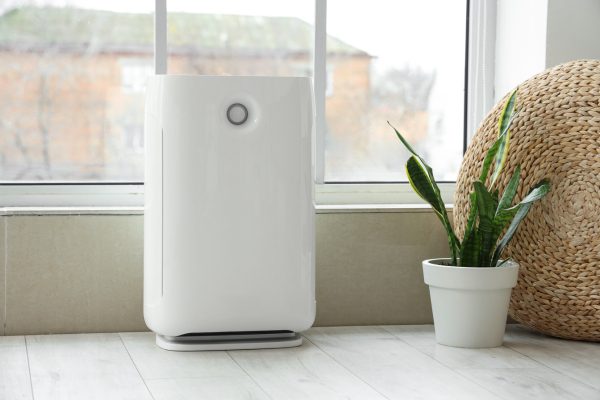
Running purifiers only when symptoms appear represents the most damaging mistake. Air pollution accumulates invisibly, often reaching harmful levels before causing noticeable symptoms. By then, clearing the air requires extended high-speed operation. Consistent runtime prevents this accumulation, maintaining healthy air proactively rather than reactively.
Incorrect sizing forces inefficient operation regardless of runtime. Undersized units run continuously at maximum speed yet never achieve adequate air cleaning. Oversized units cycle on and off frequently, creating inconsistent air quality. Match purifier capacity to room size using CADR ratings, not manufacturer room size suggestions which often prove optimistic.
Poor placement negates even continuous operation benefits. Units crammed into corners or behind furniture create clean air pockets while leaving room majority polluted. Central, elevated placement with clear airflow paths ensures whole-room purification regardless of runtime duration.
Neglecting filter maintenance transforms purifiers into expensive fans. Clogged filters restrict airflow, forcing longer runtime for minimal benefit. Worse, saturated filters can release trapped pollutants back into room air. Maintaining your home’s air quality requires consistent filter vigilance.
Opening windows while running purifiers wastes energy and compromises filtration. Outdoor air continuously introduces new pollutants faster than purification can remove them. During purifier operation, keep windows closed except for brief ventilation periods with units temporarily switched off.
Certain circumstances demand modified runtime strategies to address unique air quality challenges effectively.
Fresh construction releases formaldehyde and VOCs at highest levels during initial months. These chemicals off-gas from paint, carpet, cabinets, and furniture continuously. Run purifiers 24/7 on medium-high settings for minimum 3-6 months post-construction.
VOC-specific filtration requires activated carbon in addition to HEPA. Standard filters capture particles but pass gaseous chemicals. Ensure your purifier includes substantial carbon filtration, replacing carbon filters every 2-3 months during initial off-gassing periods.
Monitor improvement using VOC meters or professional testing. Most homes show significant reduction after 3 months of continuous purification, with levels approaching normal after 6 months. Continue running purifiers 12+ hours daily for the first year as off-gassing slowly continues.
Post-cooking smoke demands immediate high-speed operation. Kitchen activities release particles, grease, and odors requiring 1-2 hours of maximum purification. Start purifiers before cooking when possible, continuing operation until odors completely dissipate.
Chemical cleaning products introduce temporary but intense pollution. Run purifiers on high during and after using bleach, ammonia, or other household cleaners. Continue operation for 2-3 hours minimum to ensure complete chemical removal.
Guest allergies necessitate pre-emptive purification. Run purifiers continuously for 24 hours before sensitive guests arrive, maintaining operation throughout their visit. Focus on guest bedrooms and common areas where visitors spend most time.
Emergency pollution events like nearby fires or chemical spills require immediate maximum purification. Seal windows and doors, running all available purifiers on highest settings continuously until authorities declare air safe. Replace filters immediately after emergency events as they’ll be severely contaminated.
Modern technology eliminates runtime guesswork through intelligent automation that optimizes air quality while minimizing energy waste.
Air quality sensors revolutionize runtime decisions by providing real-time pollution data. These sensors detect PM2.5, PM10, and sometimes VOCs, displaying levels on digital screens. When levels exceed preset thresholds, fans automatically increase speed. During clean periods, units reduce to energy-saving modes.
Timer functions enable sophisticated scheduling without daily adjustment. Program different speeds for various day periods: high during morning routines, low during work hours, medium for evening activities. Advanced timers allow different weekday and weekend schedules, perfectly matching your lifestyle.
App control brings unprecedented convenience to runtime management. Monitor air quality remotely, adjust settings from anywhere, and receive filter replacement alerts. Some apps track historical air quality data, revealing patterns that inform optimal runtime scheduling.
Smart home integration creates seamless automation possibilities. Link purifiers with motion sensors to activate when entering rooms. Connect with smart thermostats to coordinate with HVAC operation. Voice control through Alexa or Google Home enables hands-free adjustments without interrupting activities.
Yes, it’s completely safe to run air purifiers continuously. Manufacturers design modern units for 24/7 operation with safety certifications ensuring no overheating or electrical risks. Continuous operation actually extends motor life by avoiding repeated start-stop cycles that cause wear. The only considerations are energy costs and filter replacement frequency, both manageable with proper planning.
Continuous operation doesn’t damage quality air purifiers. Motors in reputable brands undergo extensive testing for 24/7 use over multiple years. In fact, frequent on-off cycling causes more wear than steady operation. Think of it like highway versus city driving, continuous operation is the smooth highway cruise that’s easier on components.
Keep purifiers running while away to maintain clean air for your return. Pollutants accumulate quickly in sealed homes, requiring extended high-speed operation to reclear air. The energy saved by turning off units is minimal compared to the air quality benefit of continuous operation. However, if leaving for extended periods (weeks), turning off units prevents unnecessary filter use.
Running purifiers with open windows wastes energy and compromises effectiveness. Outdoor air continuously introduces new pollutants faster than purification can remove them. If you must open windows for ventilation, turn off purifiers temporarily. Once windows close, run units on high speed for 30-60 minutes to reclear indoor air.
Initial room cleaning depends on size and purifier capacity. A properly sized unit cleans its rated room size in 15-30 minutes on high speed. However, maintaining clean air requires continuous or extended operation as new pollutants constantly enter. Think of air purification like temperature control, it’s an ongoing process, not a one-time event.
Determining optimal air purifier runtime ultimately depends on your unique combination of health needs, environmental factors, and lifestyle preferences. While 24/7 operation provides the gold standard for air quality, strategic scheduling can achieve excellent results with reduced energy consumption.
Remember these key principles: severe allergies and high pollution demand continuous operation, moderate concerns benefit from 8-12 hour daily runtime, and specific situations require targeted 2-4 hour bursts. Room size dramatically impacts required runtime, with larger spaces needing extended operation for thorough cleaning.
The minimal energy cost of continuous operation, typically $5-10 monthly, pales compared to health benefits including better sleep, reduced allergies, and improved overall wellbeing. Smart features and proper maintenance further optimize efficiency, ensuring maximum benefit from every hour of operation.
Monitor your indoor air quality, adjust runtime based on results, and don’t hesitate to run your purifier longer during challenging periods. Your lungs will thank you for prioritizing clean air, and you’ll quickly discover the runtime sweet spot that keeps your home fresh, healthy, and inviting year-round.
